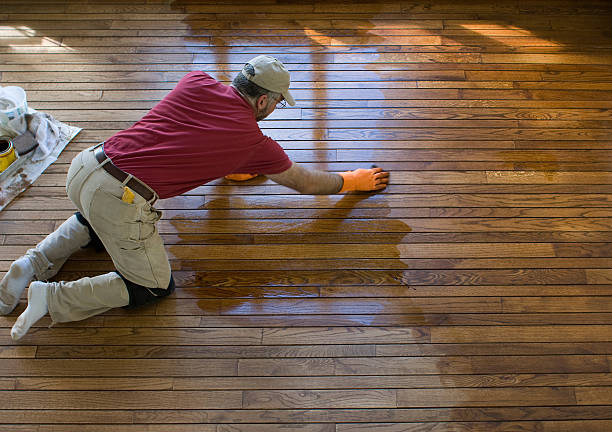When you’re considering installing ceramic tiles in your home, timing can significantly impact the outcome.
You might find that spring or fall offers the most favorable conditions, with mild temperatures and manageable humidity levels.
Installing during these seasons not only aids in proper adhesive curing but also minimizes the risk of tile misalignment.
However, there are other factors to consider, including specific room conditions and potential traffic disruptions.
Understanding these elements can help you make a more informed decision about the best time for your project. What else should you be aware of before you proceed?
Seasonal Considerations
The changing seasons significantly impact ceramic tile installation. Understanding these seasonal influences can help you plan your project for optimal results.
Ideal Seasons:
- Spring and Fall: These seasons often offer the most favorable conditions for tile installation. Mild temperatures and lower humidity levels create an ideal environment for adhesive to cure properly.
Summer Challenges:
- Rapid Drying: Summer heat can accelerate the drying process, potentially leading to uneven curing and poor adhesion if the adhesive dries too quickly.
Winter Considerations:
- Temperature Fluctuations: Cold temperatures and fluctuating indoor temperatures due to heating systems can negatively impact adhesive performance.
Planning is Key:
- Check the Weather Forecast: Monitor the weather forecast closely to avoid unexpected temperature or humidity changes that could disrupt the installation process.
By carefully considering the seasonal conditions, you can ensure a smoother installation process and a better final result for your ceramic tile project.
Climate and Humidity Effects
Climate and humidity play a significant role in the success of a ceramic tile installation.
Humidity Considerations:
- High Humidity:
- Can increase drying times for adhesives.
- May cause tiles to shift or become misaligned.
- Ideal humidity levels for tile installation are between 30% and 60%.
- Low Humidity:
- Can cause adhesives to dry too quickly, resulting in weak bonds between the tiles and the substrate.
- Consider using a moisture-retaining additive to help with the curing process.
Temperature Considerations:
- Ideal Temperature Range: Install tiles when temperatures are between 50°F and 100°F.
- Extreme Temperatures: Extreme temperatures, both hot and cold, can compromise the installation process and the longevity of the tile installation.
By carefully considering climate and humidity factors, you can ensure optimal conditions for tile installation, leading to a long-lasting and beautiful result.
Room-Specific Timing
When planning your ceramic tile installation, carefully consider the unique characteristics of each room and your lifestyle to minimize disruption and ensure a smooth installation process.
Room-Specific Considerations:
- High-Traffic Areas:
- Schedule installation during periods when you can minimize disruption to daily routines.
- Avoid busy seasons or holidays, especially for kitchens and bathrooms.
- Infrequently Used Rooms:
- Offer greater flexibility in scheduling as they have less impact on daily life.
Seasonal Considerations:
- Cooler Months: Can provide more stable temperatures for adhesive curing, especially in rooms without adequate heating.
- Avoid Extreme Temperatures: Schedule installation during moderate temperatures to ensure proper adhesion and prevent potential issues.
By carefully considering these factors, you can choose the most convenient and suitable time to install your tile flooring, minimizing disruption to your daily life and ensuring a successful installation.
Selecting the right time to install ceramic tiles in your home is crucial for achieving the best results.
By considering seasonal factors, climate, humidity, and the specific characteristics of each room, you can ensure optimal conditions for installation.
Spring and fall are often ideal due to their mild weather, while being mindful of high traffic periods can help minimize disruptions.
By carefully planning and preparing for your tile project, you’ll not only enhance the beauty of your space but also ensure the longevity and durability of your tiles.
Taking these considerations into account will lead to a successful installation that meets your expectations.

